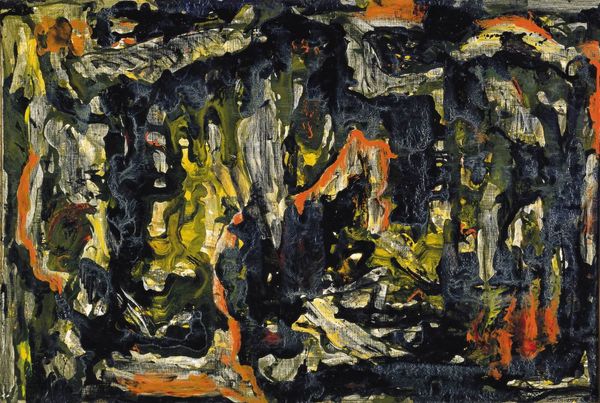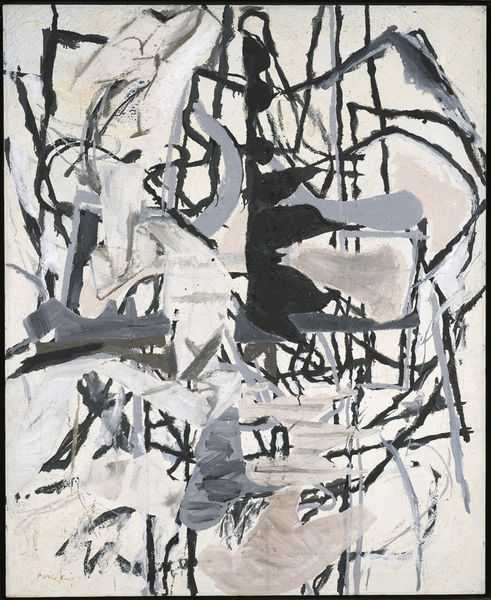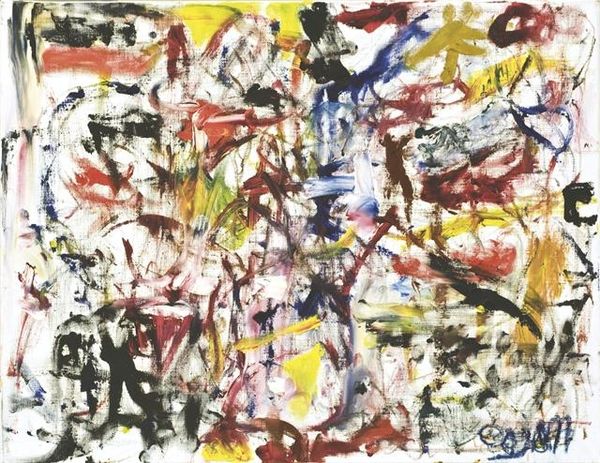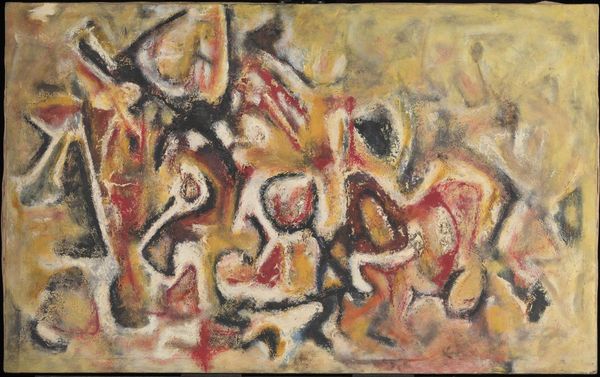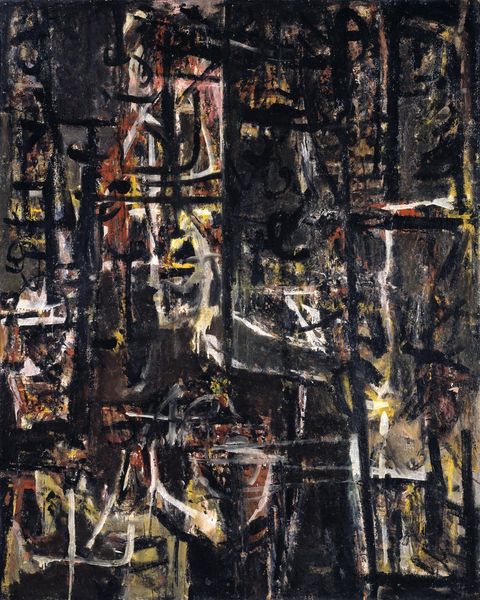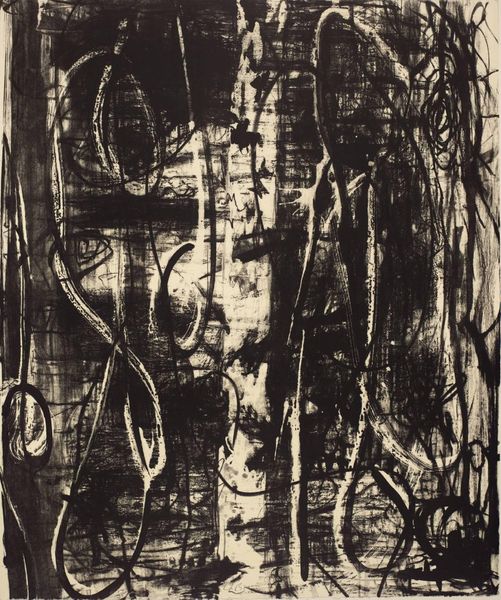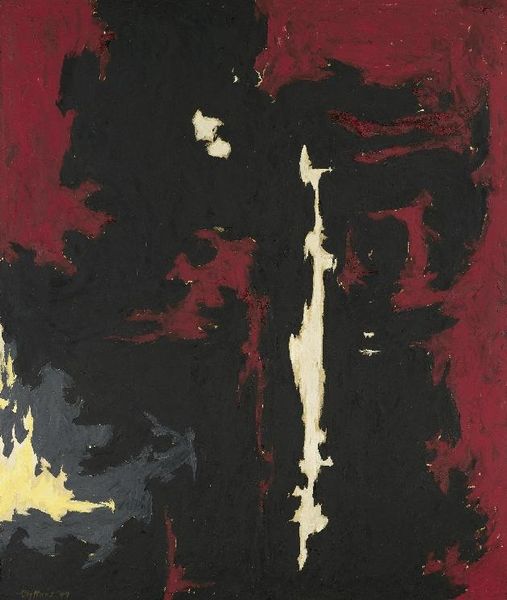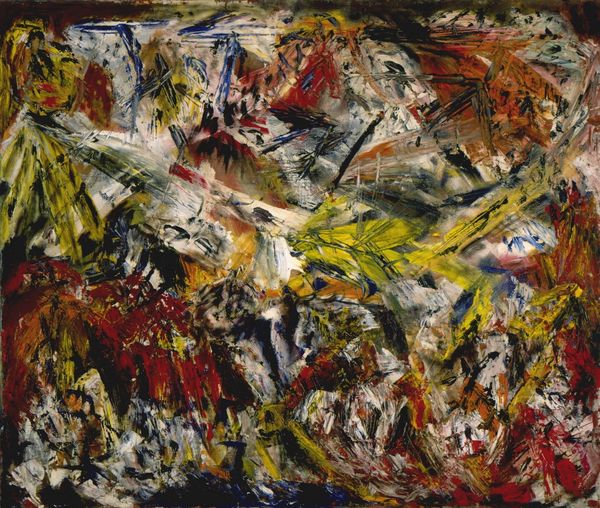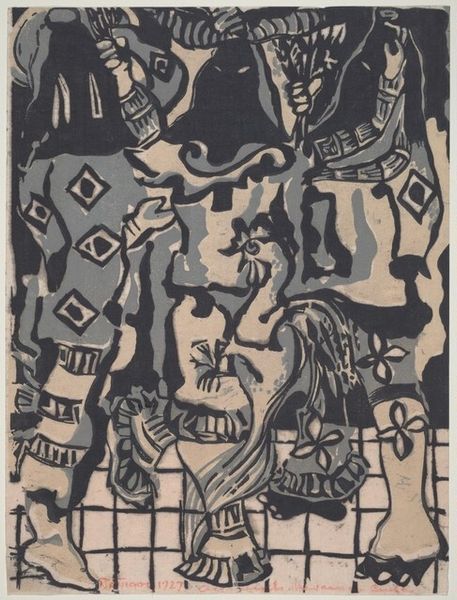
mixed-media, painting
#
abstract-expressionism
#
abstract expressionism
#
mixed-media
#
painting
#
matter-painting
#
abstraction
Dimensions: overall: 112.4 x 83.82 cm (44 1/4 x 33 in.)
Copyright: National Gallery of Art: CC0 1.0
Curator: Welcome. We're looking at "Wall of Remorse," a mixed-media piece created in 1952 by William Chapin Seitz. Editor: It feels…claustrophobic. Like faces are trapped behind smudged glass, all heavy lines and blurred shapes, threatening to spill outwards. Is there a palpable sense of struggle? Curator: Seitz was deeply engaged with Abstract Expressionism at this time. These artists sought to express profound emotion and psychological states, often through non-representational means. The historical backdrop of the post-war era is essential. The collective trauma and existential angst were channelled into this movement. Editor: It certainly radiates that energy. The black dominates, of course, but that occasional sickly pink peeking through feels significant. Is it shame? Illness? Are these repressed figures a mirror for something larger about the era? And who is repressing whom? Curator: Those are pertinent questions. The political climate of the early 50s in the United States – the rise of McCarthyism – led to a stifling atmosphere of fear and suspicion, certainly impacting artists, too. Editor: So, even the name—"Wall of Remorse"—becomes more layered. Whose remorse is it? Individual? Collective? Societal? Curator: I believe Seitz meant for the painting to embody multiple layers of feeling. Abstraction offered a space where one could confront complex and contradictory emotions without explicitly depicting a specific narrative. Editor: Looking at it through today’s lens, I'm also struck by the seeming power dynamics and potential echoes of gender and racial tensions. It's intriguing how this purely abstract approach still seems so incredibly present and of its moment. Curator: Indeed. Seitz’s legacy shows how even in its most abstract form, art carries the echoes of history and continues to speak to new contexts, which evolve over time. Editor: And that dialogue between the past and present makes pieces like "Wall of Remorse" continuously resonate and provoke discussion. It is also a reflection of the society that it stems from.
Comments
No comments
Be the first to comment and join the conversation on the ultimate creative platform.
